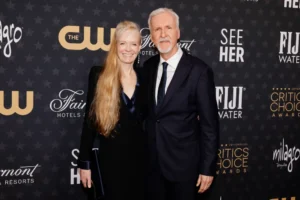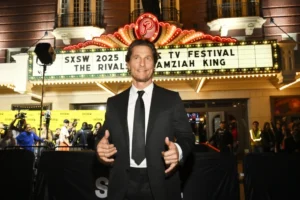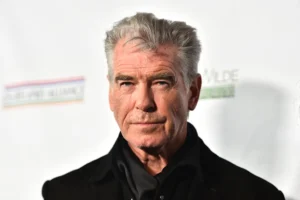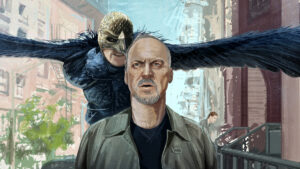In the annals of Hollywood box office history, 2014 will go down as something of a dud. There were hits such as Walt Disney’s Guardians of the Galaxy, where the intergalactic heroes battling evil included a talking raccoon and a monosyllabic tree. And also a handful of original releases, notably The Lego Movie — which, on paper, sounded about as appealing as standing on Lego bricks in bare feet but which turned out to be a critical and commercial success. Yet in financial terms, 2014 was a flop — a turkey, to use the seasonally appropriate Hollywood parlance. US box office revenues in the year to December 8 were at $9.6bn, down almost five per cent on 2013, according to Box Office Mojo. The key summer period, when the big studios serve up their most bankable fare, was off 16 per cent compared with last year, and only one film, Paramount Pictures’ Transformers: Age of Extinction, surpassed $1bn in global theatrical revenues. This compares with two $1bn hits last year (Frozen and Iron Man 3) and four in 2012 (The Avengers, Skyfall, The Dark Knight Rises and The Hobbit: An Unexpected Journey). Nerves can be shredded easily in Hollywood but no one is hitting the panic button just yet. Instead, all eyes are on 2015 which will be different — very different, if Hollywood pundits are to be believed — for one very simple reason: sequels. Next year some of the industry’s biggest film franchises will return to cinemas, and the studios are banking on audiences turning out in force. Consider what is slated: Universal Pictures will release the seventh instalment in its seemingly never-ending Fast and Furious series; Arnold Schwarzenegger returns as a time-travelling cyborg in Terminator Genisys; James Bond is back, for the 24th time, in Spectre; Liam Neeson will again seek to punch his way through a horde of bad guys in Taken 3; and the hugely successful Hunger Games series will come to a climax with Mockingjay — Part Two. Sequels are also planned for Jurassic Park, The Avengers, Ted, Magic Mike and Paul Blart: Mall Cop. Oh, and the seventh instalment of Star Wars will also hit cinemas, part of Walt Disney’s plan to revive the epic franchise under the watchful eye of director JJ Abrams. Box office expectations for 2015 are therefore running high. “It may be one of the biggest ever,” says Paul Dergarabedian, senior media analyst with Rentrak, which measures box-office performance. Martin Freeman in ‘The Hobbit: The Battle of the Five Armies’ (2014) © Warner Bros If it seems like there are more franchise movies around these days, that is because there are: seven of the 10 top- grossing movies globally in 2014 were sequels. Compare this with the year-end box office tally 20 years ago when only one of the top 10 — the Harrison Ford-starring Clear and Present Danger — was a sequel. Hollywood studios love franchise films because they have built-in awareness with audiences. “When they work, they can be a licence to print money,” says Amir Malin, managing principal of Qualia Capital, a private equity firm that invests in the media sector. But their popularity has come at a cost: these days, studios are less inclined to produce a wide-release film based on an original idea, says Lynda Obst, author of Sleepless in Hollywood, a book which explores the industry’s sequel mania. The more the international audience is familiar with a title, the more they look forward to seeing it again Obst produced Interstellar, alongside Christopher Nolan and Emma Thomas, one of 2014’s rare original hits. She says technological change and the rise of the international market are to blame for the proliferation of so-called “tentpoles” — big-budget franchise movies that generate so much revenue they can support a studio’s entire year of production. “Studio profits used to be generated by DVDs, which financed the original movies,” she explains. But DVD sales have fallen precipitously — “obliterated by new technology”, as Obst puts it — and studio profits now come increasingly from outside the US, in booming multiplex markets such as China, which is adding more than 10 screens a day. “You can’t make movies the same way internationally as you do in the US,” Obst says. “You can’t pay for television advertising in every city in the world, so you become dependent on pre-awareness of the movie.” How do studios create this pre-awareness? They make sequels — and lots of them. Daniel Craig in ‘Skyfall’ (2012) © Columbia Pictures “The more the international audience is familiar with a title, the more they look forward to seeing it again,” she says. “In Hollywood, familiarity breeds success, not contempt.” The biggest film of this year was Michael Bay’s Transformers: Age of Extinction, the fourth film based on the Hasbro toy line. It was produced and distributed by Paramount Pictures — which also released Interstellar — and became the first film to cross the $300m mark in China, where it took more than it made in the US. In fact, about 75 per cent of the film’s takings came from outside America, part of a swing towards international markets that has forced Hollywood to consider how to make its films more relevant to non-US audiences. A large part of the latest Transformers movie was shot in China, for example, and it featured Chinese stars alongside Mark Wahlberg and the cast of talking robot cars. Paramount usually releases between 15 and 17 films a year. “Within that we look to do at least three to five franchises as part of our slate,” says Brad Grey, its chairman. “We want to be able to sell these pictures around the world.” Franchise films are expensive to produce and market: budgets can range from $150m to more than $200m. “When you bet big and you have strong talent and expensive technical effects . . . these pictures can cost.” Christian Bale in ‘The Dark Knight Rises’ (2012) © Allstar It helps to have a deep-pocketed media conglomerate owner: Paramount is owned by Viacom, for example, while Universal Studios is part of the Comcast cable empire. And though intellectual property is a large cost, the biggest studios have vast libraries of rights that can be exploited time and again. Time Warner has for many years owned DC Comics, which its Warner Brothers studio used to its advantage when it revived the Batman series. Walt Disney has made acquiring valuable intellectual property central to its strategy under Bob Iger, its chief executive, and in the past few years has acquired Marvel Studios ($4.2bn), which has produced a string of hits, and Lucasfilm ($4bn) bringing Iron Man, Captain America and Han Solo under the same roof as Mickey Mouse and Tinkerbell. Five years ago, Viacom paid $60m to two little-known media companies, the Mirage Group and 4Kids Entertainment, for the rights to Teenage Mutant Ninja Turtles, the comic book series that had already been adapted for a 1980s cartoon series and a 1990 movie. Viacom saw the opportunity for a reboot. “We bought the rights and created a new version of a Turtles movie within our franchise business at Paramount, thinking it could be repeated if it worked,” says Grey. Costing an estimated $125m to produce, according to the Internet Movie Database, the film has gone on to earn nearly four times that figure worldwide since it was released this summer. A sequel is, naturally, in production. Steven Spielberg’s 1975 Oscar-winning ‘Jaws’ spawned four sequels, each worse than its predecessor Franchises may be Hollywood’s new cash machine but the studios have not entirely abandoned original movies. Striking the right balance is essential, notes Grey. “I am not thinking about franchises when we release Selma [the civil rights-era story to be released this month, which has been tipped for Oscar success] or any number of our other really acclaimed movies,” he says. But at the same time, he makes it clear why the studios are so keen to develop successful franchises: “When you hit you can have very meaningful income for years, even decades, to come.” While the current vogue for producing and maintaining franchises is relatively new in Hollywood, the industry has a long history of producing sequels. In the 1930s, episodic movie “serials” such as Buck Rogers and Flash Gordon drew cinema audiences week after week. The horror movies produced by Universal Studios in the same decade also spawned numerous sequels, such as Bride of Frankenstein and Dracula’s Daughter. In the decades that followed, the biggest studios produced countless genre movies — comedies, westerns, musicals, gangster films — featuring stars such as James Cagney, Fred Astaire, John Wayne and the Marx Brothers, in which the lead actor would often play variations on the same character. ‘Teenage Mutant Ninja Turtles’ (2014) © Paramount Pictures The paradigm shifted in the 1970s, when The Godfather: Part II became the first sequel to win best picture at the Academy Awards. But, far from ushering in an era of critical excellence, the studios saw instead an opportunity to squeeze their successes for all they were worth, spawning a catalogue of inferior follow-ups to hit films over the next 20 years. The blockbuster success of Steven Spielberg’s 1975 Oscar-winning Jaws, for instance, spawned four sequels, each worse than its predecessor (Spielberg wisely declined to be involved in any of them), culminating in the appalling Jaws: The Revenge (1987) regarded widely as one of the worst films ever made. “I’ve never seen it, but by all accounts it’s terrible,” Michael Caine, the film’s star, once said. “However, I have seen the house it built and it’s terrific.” In the 1980s and early 1990s a clear trend for sequels had been established, particularly with action films. Assuming the first film was a success, a second could be produced using essentially the same plot but in a different setting. Bruce Willis fought a gang of criminals in a Los Angeles skyscraper in 1988’s Die Hard; in the sequel three years later, the action had moved to an airport. The retired navy SEAL played by Steven Seagal in 1992’s Under Siege grappled with a group of terrorists on a ship; in the follow-up, the same character decided to take his niece on a relaxing train trip only to encounter another group of terrorists. Sequels promise familiar characters and bigger action sequences, and, most of the time, good box-office returns. But it was not until 1997 that the studios came to fully realise how lucrative franchise films could be. The awakening came in the unlikely form of Austin Powers, the innuendo-laden spy comedy starring Mike Myers, which scraped to $54m in total ticket sales at the US box office. Then the film and its zany central character began to take off in a different format: “It became a cult hit on video,” explains Rentrak’s Dergarabedian. “So when the second one came out, it powered an opening weekend that was bigger than the entire run of the first film.”
The rise and rise of the Hollywood film franchise
















+ There are no comments
Add yours